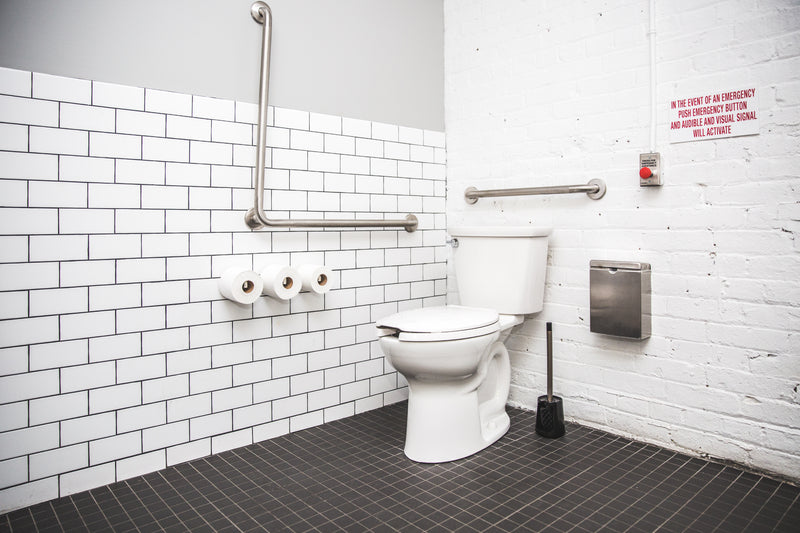Golf handicapping secrets: the best way to improve your score
Do you want to improve your golf score? It can be a challenge to go out on the course and consistently hit a low score. But there are certain secrets that can help you get better at golf handicapping. In this blog post, we will reveal the best way to improve your score on the golf course. So read on for our top tips and tricks!
Understanding the Basics of Golf Handicapping
Golf handicapping is a complex and complicated process, but at its core it’s simply a way to give yourself an advantage on the golf course. By understanding the basics of how golf handicapping works, you’ll be able to make better decisions when it comes to playing your game.
When you play golf, each round is essentially a mini tournament. You’re competing against all of the other players on the course, and by knowing what they’re capable of you can put yourself in a more advantageous position. That’s where golf handicapping come in – by calculating your individual handicap index (the number shown on official scorecards), you can figure out your relative weakness and work to address it.
There are a few factors that go into calculating your handicap index: club performance (in terms of distance hit and accuracy), greens in regulation (how often they were kept in playable shape during your round), ball striking (how many fairways and greenside bunkers were hit from close range), putting (putting distances from inside 10 yards compared to outside 10 yards) and average speed across four rounds played recently. After compiling all this information, your USGA-affiliated club will assign you a specific handicap number – Typically this falls within one whole number point above or below par for men, with women typically seeing slightly higher numbers (.75 points). Most importantly, keep in mind that no two people are exactly alike when it comes to their ability on the golf course – so don’t worry if your actual handicap index falls between two different ranges shown on scorecards! In fact, those gaps can actually create advantages for experienced players who know how to take full advantage of them.
At its most basic level, then, golf handicapping boils down to sorting through all the data generated during one round of play and figuring out which aspects correlate most closely with success as a golfer overall – making use of information like club distances hit or green speeds rolled over allows players OF ALL LEVELS TO COMPETE A FAIR GAME!
Section 2: Calculating Your Handicap Index
It’s important not to get too bogged down in math when thinking about improving your own game – ultimately there is no “one right” way to calculate an optimal handica p . Instead , focus on finding an approach that works well for YOU . Here are four common methods used by amateur golfer s : 1) Stroke Index
Stroke index is probably the most basic and straightforward way to calculate your handicap index. Simply divide total strokes played by total rounds played (rounds with a stroke counted as “1”, rounds without a stroke counted as 0). This number will give you an accurate snapshot of how often you were able to capitalise on your opportunities on the golf course.
Pros invariably use a slightly different method called net average, which subtracts Eagles (-2 or better) from Total Strokes Played in order to get a more accurate representation of efficiency . The result is important because it allows players at all levels to see how they compare relative to others even when their results vary greatly. For instance, if John averages 30 Net Averages but gets 52 Bogeys during regulation play, his Index would be – 10 due to poor consistency. 2) Handicap Status Points
A variation on the “net average” concept is handicap status points (HSP), which are simply subtracted from par for each hole instead of counting Eagle-less holes towards your handicap. HSP calculations are used predominantly in professional golf and provide an interesting wrinkle in that league competition dictates more stringent handicapping requirements than tournaments open only to amateurs (i.e., scratch players). For example, let’s say Suzie’s game reads 27 HSP (+3/-1) for 18 holes played… her Par for the round would easily be 78 (+12/-6)! 3) Stroke Ratio Method
Probably one of the most commonly employed methods among amateur golfer s , stroke ratio methodology calculates success based on dividing total strokes gained by total strokes used . While it’s simple enough that even a beginner can understand it, its effectiveness comes down largely door personal preference – some pros swear by it while others think it doesn’t translate well into scoring differential between players at various levels of experience 4) Greens In Regulation Percentage Method m
Greens In Regulation Percentage (GIRP) uses data generated during past rounds while playing official courses in order to correct any discrepancies between actual greens hit and what should have been hit given playing conditions . This calculator consists of five boxes placed around each green – Green 1 represents when flagstick was last moved (left side box), Green 2 represents when ball was struck OFF THE GREEN but still within bounds (middle box), Green 3 represents when ball first crossed OVER LINE horizontally onto GREEN territory BUT NOT IN BOUNDS OF HOLE DIRECTLY IN FRONT OF GREEN (right side box), Green 4 represents when ball was struck IN BOUNDS OF HOLE DIRECTLY IN FRONT OF GREEN (top box), and Green 5 represents when ball was putted ON GREEN. The percentage of greens hit in each of these five boxes is then averaged and added together to give the player’s GIRP for that hole.
This method is often used by amateurs to fine-tune their game before playing an official course, as well as to better understand their own putting skills in relation to different greens. 5) Modified Stableford Method
The Modified Stableford Method (MSM) is a more complex calculation that takes into account a player’s average speed over the last four rounds played, number of putts made from inside 10 yards, number of putts made from 20-30 yards, and number of putts made from 30-40 yards. This information is then used to generate a handicap index that is relative to other players on the course – giving you a better idea of how well you’re playing compared to others even if your score falls within a specific range.
There are pros and cons to each of these methods, so it’s important to find one that feels comfortable and makes sense for you as an individual golfer. By understanding the basics of golf handicapping, you’ll be able to start making smarter decisions on the golf course – improving your score in the process!

Calculating Your Handicap Index
There are a few things you can do to improve your golf handicap. One of the most important things you can do is to practice regularly. This will help you get better at playing the game and also allow you to improve your accuracy. Additionally, finding a good coach or instructor who can teach you the basics of proper golf swing may also be beneficial. In fact, many top professionals use personal coaches in order to optimize their performance on the course.
Another thing you can do is find courses that suit your abilities and play them often. Remember, each golfer has different strengths and weaknesses, so it’s important to find courses that challenge those areas while still giving you some room for improvement. Finally, keep track of your progress by keeping a golf logbook or tracking device. This will allow you to see how much progress you’re making as well as identify any holes where you need to focus more on improving your technique.
Using the USGA Handicap System
The USGA Handicap System is a system used by golfers to calculate their handicap index. The handicap index is a number that reflects your playing ability and can be used to compare your score against other golfers. The USGA Handicap System is based on the following principles:
Your Handicap Index = ( Stroke Average – Par Average ) / 2
Your Stroke Average is the average number of strokes you score per round.
Your Par Average is the average number of pars you make per round.
The USGA Handicap System uses these two averages to calculate your handicap index. Your handicap index will be between 0 and 18, with 18 being the best score and 0 being the worst score.

Applying Course Handicaps to Your Score
There are a few different ways to calculate your handicap index. The USGA handicap system is the most common, but there are other systems available as well.
To use the USGA system, you first need to find your club rating. This is a number that represents your average handicap from all of your rounds of golf. You can find this number on the back of your golf club or on the club’s website.
Next, you need to find your handicap index. This is a number that represents how many strokes you are above or below the average golfer. To calculate your handicap index, divide your club rating by 100.
For example, if you have a club rating of 80 and an index of 16, your handicap would be 16/100 or 1.6.
To use another system, you first need to find your playing ability category. This is a number that represents how good of a golfer you are based on how often you play competitively. There are six playing ability categories: beginner, low-average, average, high-average, very high-average, and elite. You can find this number on the back of your golf card or on the USGA website.
Next, you need to find your handicap index for that playing ability category. To do this, divide the playing ability category number by 100. For example, if you are in the beginner category and have a handicap index of 12, your handicap would be 12/100 or 1.2.
Once you have these numbers, you can use them to calculate your handicap index for any course in the USGA system.

Knowing When to Adjust Your Handicap Index
There are a few key things to keep in mind when handicapping a tournament: first, always use the course conditions as your guide. Second, be sure to factor in all relevant factors-such as wind and elevation changes-that can affect the gameplay on a particular day. And finally, take into account how well players have played on previous days of the tournament. By following these tips, you can put yourself in a strong position to achieve a good score in any golf event!

Strategies for Improving Your Handicap Score
Utilizing the Course Slope Rating
Improving your handicap score is a process that can be achieved through a variety of strategies. One of the most important things you can do is to familiarize yourself with the course and its slope rating. This will allow you to make informed handicap adjustments. Additionally, practice and playing against better players will help you improve your skills. Finally, keep track of your progress and make adjustments as needed.
Identifying and Taking Advantage of Strengths and Weaknesses
Anyone can improve their golf handicap by identifying and taking advantage of their strengths and weaknesses. Some golfers are naturally better putters, others have an uncanny knack for hitting the ball long, while others have a strong short game. By utilizing these natural abilities, golfers can further increase their handicap score.
However, not all players are lucky enough to be born with talent in one area or another. For many golfers, practice and hard work is essential to improving their handicap score. From practicing stroke technique to honing in on specific weaknesses in your game, nothing will make a bigger impact than putting in the effort required to improve. Even if you don’t possess natural ability like some golfers do, dedication and hard work will get you to the same place.
No matter what your handicap, there are strategies and techniques that can be used to improve your score. By utilizing these tips, you can work towards becoming a better golfer overall.
Working on Your Mental Game for Improved Shot Making
When it comes to golf, there is no one-size-fits-all approach to handicapping. Every golfer has their own strengths and weaknesses, which means that the best way to improve your score is to find out what you need to work on and focus on those areas.
One of the best ways to do this is to take a look at your current handicap and see where you can make the most improvement. You can use this information to create a handicapping plan, which will outline specific goals you want to achieve and the steps you need to take in order to reach them.
Another key element of improving your score is your mental game. This includes everything from staying positive during tough shots to focusing on the task at hand. By honing these skills, you can improve your shot making and overall proficiency on the green.
Leverage Technology toYour Benefit
There’s no one-size-fits-all approach to golf handicapping, but using technology to your advantage can help you rack up more points on the green. Here are a few tips:
- Track Your Progress: Most golfers don’t track their progress closely enough and consequently don’t have a good sense of how they’re doing relative to their peers. A simple way to remedy this is to set up an online scorecard and update it every time you play. This will give you a clear picture of your strengths and weaknesses, which can then be used as guidance for improving your game.
- Use Golf Stat tracking Software: There are many free and paid golf stat tracking software programs that are available online. Once you have installed the software, enter your course information and start tracking your shots. You’ll be able to see where your strokes fall on the graphs, as well as which clubs are giving you the most favorable results.
- Try a Golf handicapping simulator: If you’re looking for an even more precise way to calculate your handicap than using software, consider using a golf handicapping simulator. These devices use cutting-edge physics simulation algorithms to help you improve your game by identifying weaknesses and helping give you better shooting habits.

Keeping Track of Your Progress with a Golf Logbook
When you’re handicapping a golf game, it’s important to understand the different types of tournaments and their rules. Tournaments can be categorized by how long they are (18-hole, 36-hole, or 72-hole), how many players compete in each division, and whether the course is open to all participants or only members of a particular club.
For example, most 18-hole tournaments have three divisions – Men’s Amateur, Women’s Amateur (which includes Divisions A & B), and Non-Amateur. In these competitions, all participants play together from tee to green on the same course. The winner of each division is the player with the lowest score.
A 36-hole tournament is longer than an 18-hole competition and has four divisions: Men’s Professional, Women’s Professional (including Divisions A & B), Senior Men’s Amateur (50 years old and older), and Senior Women’s Amateur (50 years old and older). Tournaments that are 72 holes long generally have five or six divisions.
The type of tournament also affects what handicaps are used to rank players. For example, most events at professional golf courses use a “handicap index” which ranks amateur players according to their scores relative to professionals within their own division; this makes it easier for amateurs to know where they stand against other amateur golfers in their area. Clubs that are not affiliated with a PGA Tour event may instead use a “stroke average,” which measures player performance based on shots taken per round rather than relative scores
Understanding Different Types of Golf Tournaments and Their Rules
There are a number of online resources that can help you calculate your golf handicap. Some of the more popular services include Golf Channel Handicap Calculator, Golf Digest Handicap Calculator, and Golf Scorecard Pro. You can also use online calculators provided by the USGA or other golf organizations.
Once you have your handicap index, you can use it to improve your score by playing different courses at different levels of difficulty. You can also use it to determine which tournaments are best suited for you. Keep in mind that your handicap does not always accurately reflect your playing ability. You may find that you need to adjust your handicap index depending on the course and the level of competition.

Taking Advantage of Online Resources to Calculate Your Handicap
One of the best ways to improve your golf score is to understand how handicapping works and how you can apply it to your game. Here are some basic tips:
Understand the Basics of Golf Handicapping
Handicapping is a complex skill, but there are some key principles that all golfers should understand. One important factor is your handicap index (HI), which compares your individual playing abilities with those of other golfers in your age group and division. You can find HI information for courses by visiting the USGA Handicap Database.
Calculating Your Handicap Index
There are a few steps involved in calculating your handicap index: figuring out where you rank among other golfers on the course, making adjustments for slope and distance, and ensuring that you’re using the correct scale (e.g., match play or stroke play). The USGA provides detailed instructions online, or you can use a software program like TrackMan Golf Professional or GOLF GUIDE USA+. Note that most software programs also include a scoring calculator so you can input strokes taken and compare them against hypothetical rounds played by others with similar handicaps.
Using the USGA Handicap System
There are three different systems used to calculate golf handicaps across North America: Pro-AM/Amateur-Pro/Open, Senior Amateur, and Women’s Open Qualifying Series (WOQS). Most tournaments use one of these systems; however, there are exceptions (usually events open to amateurs from any country). Before entering any event, be sure to check whether it falls under one of these categories by consulting the tournament regulations . Once you know which system is being used, enter your club’s number into the appropriate field on either Scorecard Pursuit or Tournament Golfer . If participating in an event electronically – through PGATOURLIVE®, PARXGOLF®, RBC Canadian Open LIVE!, Web Tour Services LLC.-registered players will need their SCORECARD PERSISTENT CAPI NUMBER as this number will not be associated with their player account name after logging in! Alternatively players utilizing Scorecard Exchange who have registered for an event prior to arriving may enter their PAIRING CODE via live chat during registration OR if participating over the phone call 0844 847 1870 from Monday – Friday 9am – 5pm GMT
Applying Course Handicaps to Your Score
Once you know your handicap index, it’s important to apply that number to your scorecard so you can see how your performance compares against other golfers playing the same course. The easiest way to do this is by using a Course Handicapped Score Calculator . There are also a variety of online tools that you can use; be sure to read the instructions carefully as each one has its own particular approach.
Knowing When to Adjust Your Handicap Index
There is no perfect answer when it comes to adjusting your handicap index; however, there are general guidelines that can help you make informed decisions. The first step is always trying to play as close as possible to par, especially on shorter courses where shots taken off the green carry more weight. After making any necessary adjustments, continue to track and review your progress regularly in order for adjustments to provide further benefits.
Strategies for Improving Your Handicap Score
Practices such as hitting practice sessions under pressure or playing different types of golf – e.g., long drives on a challenging course followed by short putts on an easier hole – will help improve your stroke-play ability and lower your handicap score overall. Additionally, be sure keep track of weekly/monthly/annual progress by keeping a golf logbook , which allows you reflect on both good (e.g., decreasing scores) and bad (e.g., increasing scores) performances over time in order better understand what works and what doesn’t with regards to improving your gamehandicapping skills
Golf handicapping is an important part of the game, and understanding how to use the USGA system to calculate your index will help you keep track of progress and stay competitive. Knowing when to adjust your handicap score and implementing strategies for improvement are essential for reaching the pinnacle of golfing success. With these tips in mind, along with a commitment to practice, anyone can improve their game. For more information on golfing tips, check out our other content!








